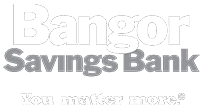
Getting out of debt may feel like a goal that is out of reach, but that is why financial experts have created specific strategies that can help you make steady progress towards becoming debt-free. One of the most popular strategies is the debt snowball method. In this, you make the minimum payment on each of your debts, and then make as big of an extra payment as you can on the debt with the smallest remaining balance.
How the debt snowball method works
As you use the debt snowball method, you will, hopefully, be able to pay off your smallest debt relatively quickly. At that point, you will be able to start snowballing your payments. All the money you had been using each month to pay off that first, small debt is now available for being used as an extra payment on your next smallest remaining debt. Each time you pay off a debt, you will have a bigger chunk of your monthly income that is available for using as an extra payment on your next smallest debt.
Is the debt snowball method right for you?
- Do you have many small debts that you owe money on? The snowball method is very helpful because you will quickly pay off the smallest debts and reduce the number of accounts and payments you have to track.
- Would a quick win help to keep motivated to continue paying down your debt? Often times, paying off the first debt quickly helps to build confidence in your ability to get out of debt.
- Do you want to have a higher success in paying off your debt? The debt snowball plan lets you have some practice with the smaller debts first. As you make progress, you are more likely to stick with the plan and be ready to address the larger debts when it is time to tackle them.
Different debt strategies work for different people, different situations, and at different times. The snowball strategy is just one example; it's important to find which strategy works best for you.
